
Quezon City, also known as the City of Quezon and Q.C., is the most populous city in the Philippines. According to the 2020 census, it has a population of 2,960,048 people. It was founded on October 12, 1939, and was named after Manuel L. Quezon, the second president of the Philippines.

Rodriguez, officially the Municipality of Rodriguez, is a 1st class urban municipality in the province of Rizal, Philippines. According to the 2020 census, it has a population of 443,954 people making it the most populous municipality in the country. Pending an affirmation through plebiscite, Republic Act No. 11812 repealed Batas Pambansa Blg. 275 and intend to revert to its original municipal name Montalban.
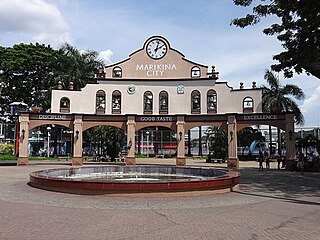
Marikina, officially the City of Marikina, is a 1st class highly urbanized city in the National Capital Region of the Philippines. According to the 2020 census, it has a population of 456,159 people.

Antipolo, officially the City of Antipolo, is a 1st class component city and capital of the province of Rizal, Philippines. According to the 2020 census, it has a population of 887,399 people. It is the most populous city in the Calabarzon region, and the seventh most-populous city in the Philippines. And also, it is the most populated city under the component city status.
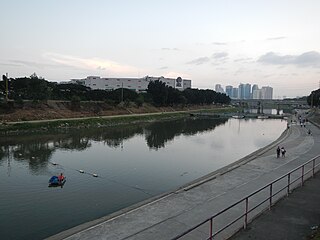
The Marikina River is a river in eastern Metro Manila, Philippines. It is the largest tributary of the Pasig River, with headwaters located in the Sierra Madre Mountains in Rodriguez, Rizal province.
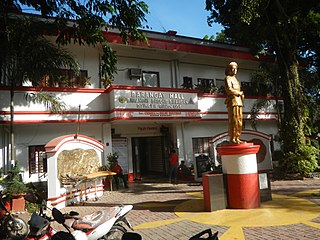
Bagong Silangan is a barangay located in the 2nd district of Quezon City, Philippines. Nearby barangays are Commonwealth, Batasan Hills and Payatas. Separated by a river in the east, the barangay leads to the Municipality of San Mateo in the province of Rizal.

Barangka is an administrative division of Marikina, Metro Manila, the Philippines. It is an urban barangay part of the 1st district of Marikina and is one of the oldest barangays in Marikina.

The U.P.–Ayala Land TechnoHub is an information technology hub jointly developed by the University of the Philippines Diliman and property developer Ayala Land. It is located in Commonwealth Avenue, Barangay U.P. Campus, Quezon City. It occupies 20 hectares within the 37.5 hectares of the U.P. North Science and Technology Park.
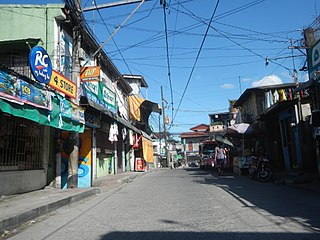
Payatas is an administrative division in eastern Metro Manila, the Philippines. It is an urban barangay located in the 2nd district of Quezon City adjacent to the barangays of Commonwealth, Batasan Hills and Bagong Silangan.

The Upper Marikina River Basin Protected Landscape is a protected area in the Province of Rizal in the Philippines, which forms the upper area of the drainage basin of the Marikina River.
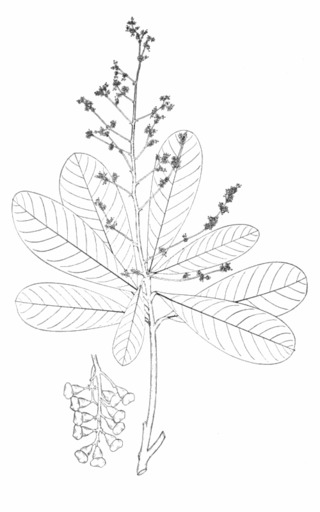
Semecarpus cuneiformis is a tree in the cashew and sumac family Anacardiaceae. The specific epithet cuneiformis is from the Latin meaning "wedge-shaped", referring to the leaf base.

Bagong Pag-asa, also known as the Magsaysay District, is an administrative division in eastern Metro Manila. It is an urban barangay of Quezon City with low-density housing and is known for its shopping malls, transport hubs and office buildings.

Philam, also known as Philam Homes, Philamlife Homes or Phil-Am, is an administrative division in eastern Metro Manila, the Philippines. It is an urban barangay located in the first legislative district of Quezon City, consisting entirely of the Philam private subdivision and gated community.
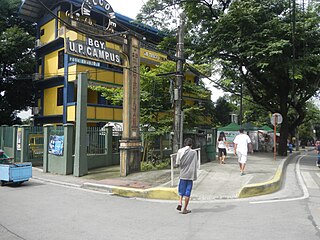
U.P. Campus is a barangay in Quezon City, Metro Manila. As its name suggests, a large part of the barangay is occupied by the main Diliman campus of the University of the Philippines (UP). UP Diliman, the university campus itself, covers seven other barangays in Quezon City, namely Krus na Ligas, San Vicente, Botocan, Culiat, Old Capitol Site, Pansol, and Vasra.
The University of the Philippines Diliman Police (UPDP) is the campus police of the Diliman campus of the University of the Philippines in Quezon City, Philippines.
Frost Plan was the popular name for the Plan of Quezon City, co-authored by Juan M. Arellano and Harry Frost, together with Alpheus Williams and Louis Croft. The plan was approved in 1941, two years after the creation of Quezon City. The Plan was revised in 1949.

Mariana, is an administrative division in eastern Metro Manila, the Philippines. It is an urban barangay in Quezon City in a middle class residential and commercial area known as New Manila, which includes Barangay Mariana and the adjacent Barangay Damayang Lagi.
Norberto Salandanan Amoranto (1907–1979) was a Filipino politician who served as Mayor of Quezon City from 1954 to 1976.


















